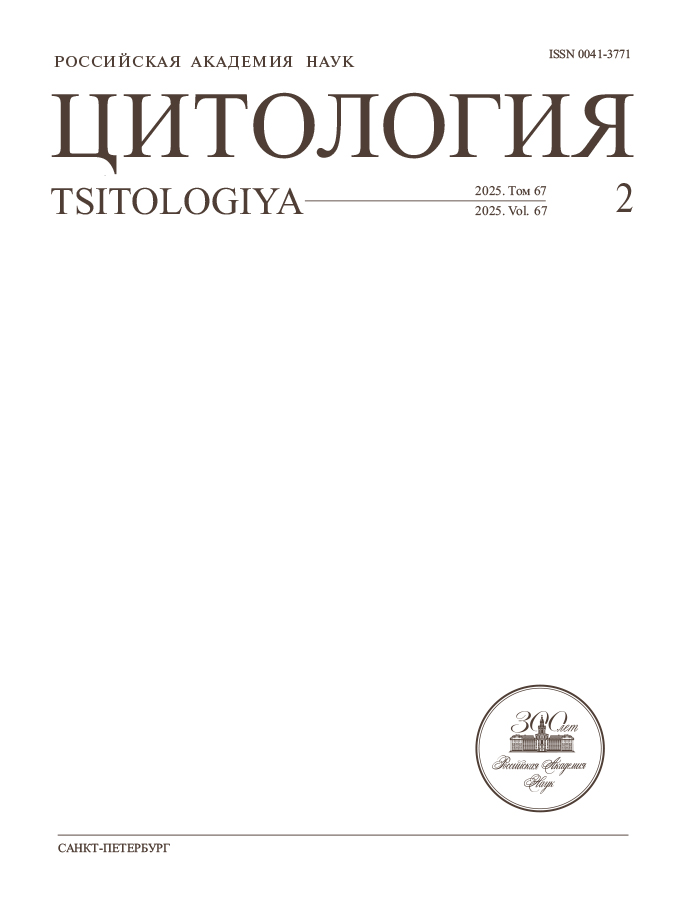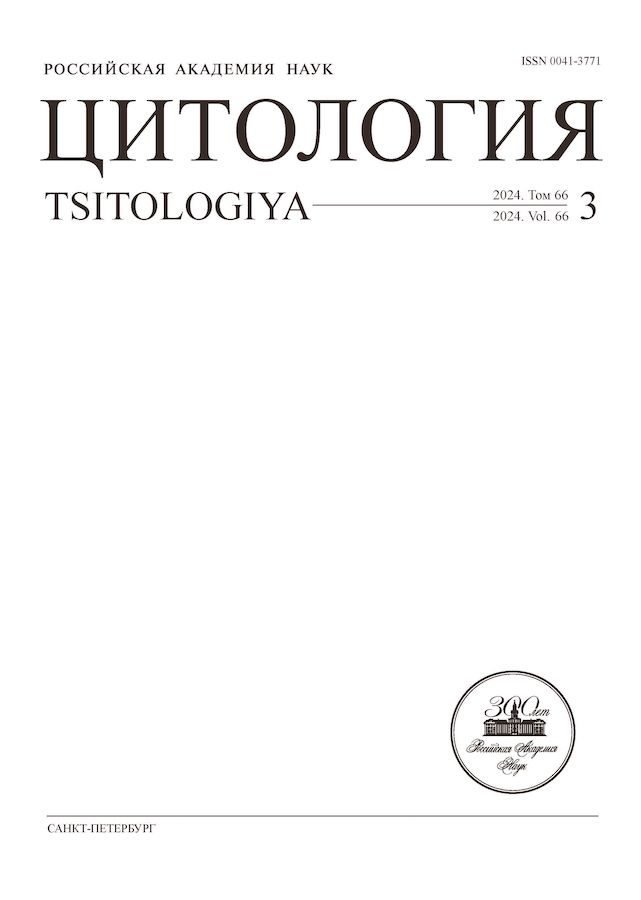Особенности молекулярного фенотипа и ультраструктуры гладких миоцитов восходящей части аорты преждевременно рожденных крыс
- Авторы: Серебрякова О.Н.1, Иванова В.В.1, Мильто И.В.1,2
-
Учреждения:
- Сибирский государственный медицинский университет
- Северский биофизический научный центр ФМБА России
- Выпуск: Том 66, № 3 (2024)
- Страницы: 289-298
- Раздел: Статьи
- URL: https://rjpbr.com/0041-3771/article/view/669598
- DOI: https://doi.org/10.31857/S0041377124030091
- EDN: https://elibrary.ru/PEBMCK
- ID: 669598
Цитировать
Полный текст
Аннотация
Преждевременное рождение может способствовать развитию болезней системы кровообращения во взрослом возрасте в связи с незавершенностью морфогенеза стенки кровеносных сосудов. Гладкие миоциты являются ведущей клеточной популяцией в средней оболочке стенки аорты и являются пластичными по своей природе, т. е. они способны менять свой фенотип в зависимости от их микроокружения. Наличие синтетически активных гладких миоцитов в стенке аорты взрослого индивида является предиктором формирования широкого спектра сердечно-сосудистых заболеваний. Целью нашего исследования является изучение особенностей молекулярного фенотипа и ультраструктуры гладких миоцитов средней оболочки стенки восходящей части аорты крыс, рожденных на 12 и 24 ч раньше срока. В работе представлены результаты иммуногистохимического и морфометрического, а также ультраструктурного анализа стенки восходящей части аорты крыс Вистар, рожденных на 12 ч и 24 ч раньше срока. Показано, что преждевременное рождение приводит к более поздней смене фенотипа гладких миоцитов с синтетического на сократительный, что может негативно отразиться на морфофункциональном состоянии сердечно-сосудистой системы.
Ключевые слова
Полный текст
Об авторах
О. Н. Серебрякова
Сибирский государственный медицинский университет
Автор, ответственный за переписку.
Email: oserebryakovan@gmail.com
кафедра морфологии и общей патологии
Россия, Томск, 634050В. В. Иванова
Сибирский государственный медицинский университет
Email: oserebryakovan@gmail.com
кафедра морфологии и общей патологии
Россия, Томск, 634050И. В. Мильто
Сибирский государственный медицинский университет; Северский биофизический научный центр ФМБА России
Email: oserebryakovan@gmail.com
кафедра морфологии и общей патологии, отдел молекулярной и клеточной радиобиологии
Россия, Томск, 634050; Северск, 636013Список литературы
- Серебрякова О.Н, Иванова В. В., Мильто И. В. 2023. Особенности строения стенки восходящей части аорты преждевременно рожденных крыс. Цитология. Т. 65. № 6. С. 593. (Serebryakova O.N, Ivanova V. V., Milto I. V. 2023. Structural features of ascending aorta wall in premature born rats. Tsitologiya. V. 65. P. 593—600.)
- Balint B., Bernstorff I. G., Schwab T., Schäfers H. J. 2023. Age-dependent phenotypic modulation of smooth muscle cells in the normal ascending aorta. Front. Cardiovasc. Med. V. 10: 1114355. doi: 10.3389/fcvm.2023.1114355
- Barnard C., Peters M., Sindler A., Farrell E., Baker K.., Palta M., Stauss H., Dagle J., Segar J., Pierce G., Eldridge M., Bates M. 2020. Increased aortic stiffness and elevated blood pressure in response to exercise in adult survivors of prematurity. Physiol. Rep. V. 8: e14462. doi: 10.14814/phy2.14462
- Bensley J., De Matteo R., Harding R., Black M. 2016. The effects of preterm birth and its antecedents on the cardiovascular system. Acta Obstet. Gynecol. Scand. V. 95. P. 652.
- Berry C., Looker T., Germain J. 1992. The growth and development of the rat aorta. J. Anat. V. 113. P. 1.
- Cao G., Xuan X., Hu J., Zhang R., Jin H., Dong H. 2022. How vascular smooth muscle cell phenotype switching contributes to vascular disease. Cell Commun. Signal. V. 20: 180. doi: 10.1186/s12964-022-00993-2
- Figueroa J., Oubre J., Vijayagopal P. 2004. Modulation of vascular smooth muscle cells proteoglycan synthesis by the extracellular matrix. J. Cell Physiol. V. 198. P. 302.
- Fujimoto T., Tokuyasu K. T., Singer S. J. Direct morphological demonstration of the coexistence of vimentin and desmin in the same intermediate filaments of vascular smooth muscle cells. J. Submicrosc. Cytol. 1987. V. 19. P. 1.
- Gabbiani G., Schmid E., Winter S., Chaponnier C., de Ckhastonay C., Vandekerckhove J., Weber K., Franke W. W. Vascular smooth muscle cells differ from other smooth muscle cells: predominance of vimentin filaments and a specific alpha-type actin. Proc. Natl. Acad. Sci. USA. 1981. V. 78. P. 298.
- Halayko A., Salari H., Ma X., Stephens N. 1996. Markers of airway smooth muscle cell phenotype. Am. J. Physiol. V. 270. P. 1040.
- Johnson R., Solanki R., Warren D. 2021. Mechanical programming of arterial smooth muscle cells in health and ageing. Biophys. Rev. V. 13. P. 757.
- Kanda K., Matsuda T. Mechanical stress-induced orientation and ultrastructural change of smooth muscle cells cultured in three-dimensional collagen lattices. 1994. Cell Transplant. V. 3. P. 481.
- Lesauskaite V., Tanganelli P., Sassi C., Neri E., Diciolla F., Ivanoviene L., Epistolato M. C., Lalinga A. V., Alessandrini C., Spina D. 2001. Smooth muscle cells of the media in the dilatative pathology of ascending thoracic aorta: morphology, immunoreactivity for osteopontin, matrix metalloproteinases, and their inhibitors. Hum. Pathol. V. 32. P. 1003.
- Looker T., Berry C. 1997. The growth and development of rat aorta. J. Anat. V. 113. P. 17.
- Merrilees M., Campbell J., Spanidis E., Campbell G. 1990. Glycosaminoglycan synthesis by smooth muscle cells of differing phenotype and their response to endothelial cell conditioned medium. Atherosclerosis. V. 81. P. 245.
- Osborn M., Caselitz J., Puschel K., Weber K. 1987. Intermediate filament expression in human vascular smooth muscle and in arteriosclerotic plaques. Virchows Arch. A Pathol. Anat. Histopathol. V. 411. P. 449.
- Petsophonsakul P., Furmanik M., Forsythe R., Dweck M., Schurink G. W., Natour E., Reutelingsperger C., Jacobs M., Mees B., Schurgers L. 2019. Role of vascular smooth muscle cell phenotypic switching and calcification in aortic aneurysm formation. Arterioscler. Thromb. Vasc. Biol. V. 39. P. 1351.
- Qin H., Bao J., Tang J., Xu D., Shen L. 2023. Arterial remodeling: the role of mitochondrial metabolism in vascular smooth muscle cells. Am. J. Physiol. Cell Physiol. V. 324. P. 183.
- Rensen S., Doevendans P., van Eys G. 2007. Regulation and characteristics of vascular smooth muscle cell phenotypic diversity. Neth. Heart J. V. 15. P. 100.
- Schmid E., Osborn M., Rungger-Brändle E., Gabbiani G., Weber K., Franke W. 1982. Distribution of vimentin and desmin filaments in smooth muscle tissue of mammalian and avian aorta. Exp. Cell Res. V. 137. P. 329.
- Shi J., Yang Y., Cheng A., Xu G., He F. 2020. Metabolism of vascular smooth muscle cells in vascular diseases. Am. J. Physiol. Heart Circ. Physiol. V. 319. P. 613.
- Sweeney M., Jones C., Greenwood S., Baker P., Taggart M. 2006. Ultrastructural features of smooth muscle and endothelial cells of isolated isobaric human placental and maternal arteries. Placenta. V. 27. P. 635.
- Tang H., Chen A., Zhang H., Gao X., Kong X., Zhang J. 2022. Vascular smooth muscle cells phenotypic switching in cardiovascular diseases. Cells. V. 11: 4060. doi: 10.3390/cells11244060
- Thyberg J., Nilsson J., Palmberg L., Sjölund M. 1985. Adult human arterial smooth muscle cells in primary culture. Modulation from contractile to synthetic phenotype. Cell Tissue Res. V. 239. P. 69.
- Wagenseil J., Mecham R. Vascular extracellular matrix and arterial mechanics. 2009. Physiol. Rev. V. 89. P. 957.
- Wang G., Jacquet L., Karamariti E., Xu Q. 2015. Origin and differentiation of vascular smooth muscle cells. J. Physiol. V. 14. P. 3013.
- Wang L., Zhang J., Fu W., Guo D., Jiang J., Wang Y. 2012. Association of smooth muscle cell phenotypes with extracellular matrix disorders in thoracic aortic dissection. J. Vasc. Surg. V. 56. P. 1698.
- Wilson D. 2011. Vascular smooth muscle structure and function. In: Mechanisms of vascular disease: A reference book for vascular specialists. University of Adelaide Press. P. 13.
- Ye G., Nesmith A., Parker K. 2014. The role of mechanotransduction on vascular smooth muscle myocytes cytoskeleton and contractile function. Anat. Rec. V. 297. P. 1758.
- Zhang J., Wang L., Fu W., Wang C., Guo D., Jiang J., Wang Y. 2013. Smooth muscle cell phenotypic diversity between dissected and unaffected thoracic aortic media. J. Cardiovasc. Surg. V. 54. P. 511.
Дополнительные файлы

















